After our weeks of travel through Laos and Cambodia, each with their own association to the Vietnam War, we finally arrived at the epicentre of events. Quang Tri region is the location of the 17th Parallel, the DMZ, and focal point throughout nineteen years of war. Our guide for the day was Mr Trung, a war veteran. He helped us learn so much and provided what will likely be one of the most historically interesting days of our adventures in South East Asia.
Context
In April 1954, The Paris Accords defined the division of French Indochina, giving independence to Laos, Cambodia and Vietnam. A temporary division of Vietnam was made into North and South. The dividing line was set at the 17th Parallel, where the Ben Hai river could act as a natural border. For 300 days after July 21st 1954 Vietnamese could move freely into North or South Vietnam. After which the border would be closed and protected by the International Control Commission nominees from India, Canada, and Poland. A demilitarised zone (DMZ) was established 5km either side of the river. Within two years elections were due to be held across all of Vietnam. These would determine the political leadership of the unified country. The elections never happened, and so one of the bloodiest wars in history began it’s escalation.
War
American involvement began with small numbers of military “advisors”, helping to train the Southern Vietnamese army. The goal was to counter sporadic guerrilla operations of the Viet Cong. The VC were a disparate group of village fighters from the poor regions of the South, who were trained and equipped by North Vietnam, and China. Unrest across the South increased through the early 1960’s. The US feared that unless South Vietnam remained a democracy (albeit of the corrupt kind) then communism would take over the country and beyond. The infamous “Domino Theory” of the 1950s considered Cambodia, Laos, Thailand, and Malaysia candidates for Communist expansion.
In March 1965 the first US Marines splashed ashore near Da Nang. By December that year 184,000 US troops were in Vietnam, rising to 485,000 in 1967. They were supported by troops from Australia, New Zealand, South Korea, Thailand and the Philippines. Defending the South was an international affair. Full scale war raged in the region while global politics played out.
By 1972 the war had become too costly, un-winnable, and deeply unpopular with US citizens. Peace was negotiated in Paris that year and signed on 27th January 1973. All US combat troops were withdrawn by the end of 1973. The North invaded across the 17th Parallel in January 1975 (a blatant violation of the Paris agreements) and advanced so rapidly that by April 30th Saigon was taken and the South surrendered. After nineteen years of hostilities the war was over.
Highway 1
Most tours to the DMZ start from Hue, the third largest city in Vietnam. It takes ninety minutes to drive up Highway 1 and just before Dong Ha we made our first stop. The catholic church here is derelict now. It has been left as a record of the fighting that took place in this area during 1972.
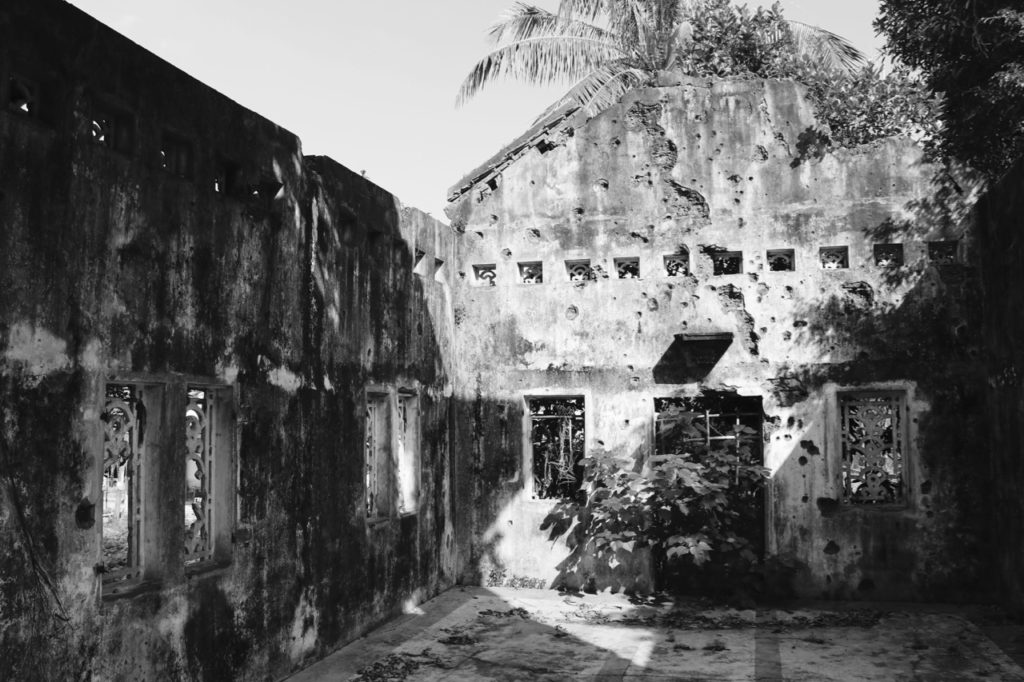
In a major offensive four divisions of North Vietnamese flooded south along Highway 1. They captured Quang Tri and surrounding area. After four months the South Vietnamese forced the North Vietnamese back to the border. During this time Highway 1 and all settlements along it experienced devastating fighting. 10,000 people (military and civilian) were killed. As a result of this battle it became known as the Highway of Horror.
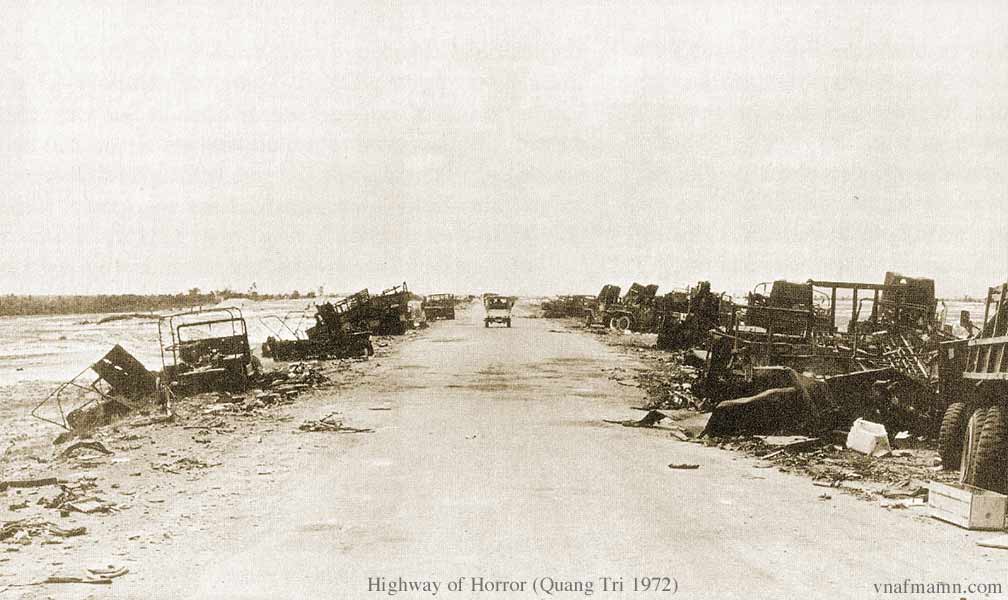
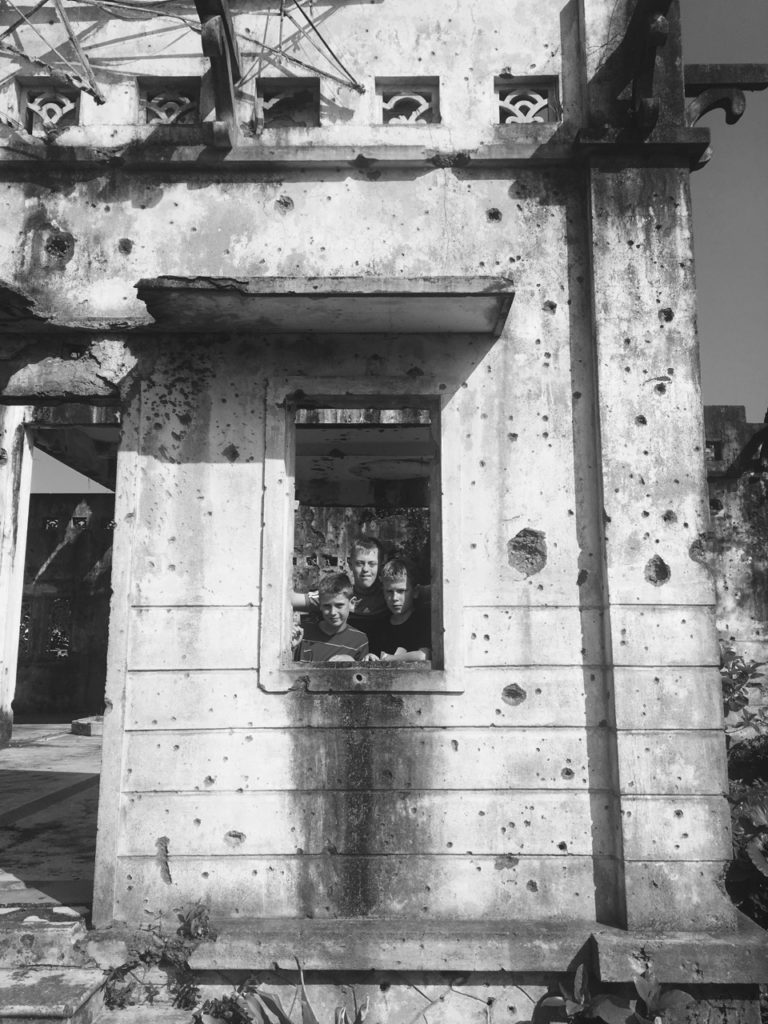
Standing in the church and seeing so many bullet holes it is spine chilling to think how ferocious the battles must have been. The very large bullet holes, caused by high calibre weapons, make you stop speechless to think the damage each round is capable of.
Highway 9
The road that heads west from Dong Ha to the Laos border is Highway 9. This was a key logistical element to the US war strategy. “Fire bases” were setup by the Americans at intervals along the highway. Their mission was to operate search and destroy missions to stop Viet Cong troop and equipment movements from North to South via the Ho Chi Minh Trail. The bases became household names in America during the war because of daily reporting on battles and casualties. Among them were Camp Carroll, The Rockpile, Lang Vay, Khe Sanh, Con Thien and Doc Mieu.
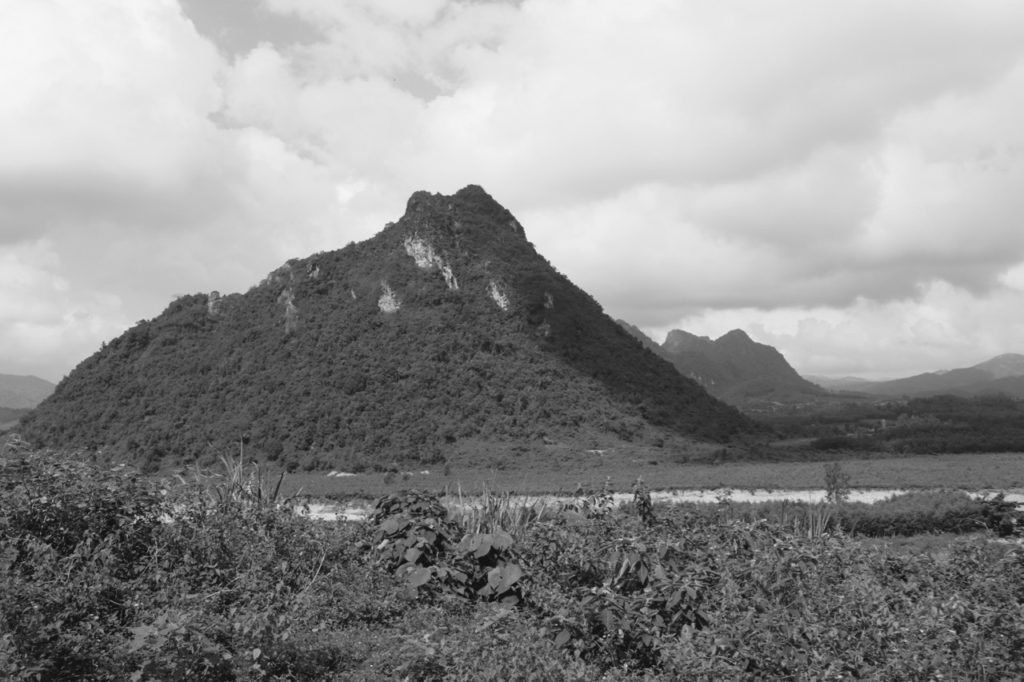
There is nothing much left to see of these bases now (apart from Khe Sanh). They were either destroyed when the Americans left or have been since stripped of all useful metal and concrete for use by the local villages. What is captivating however, is how mountainous the terrain of battle would have been. Vegetation is dense, the land is riven with valleys and steep sided hills.
The Ho Chi Minh trail was actually a collection of jungle trails running north to south across Highway 9.
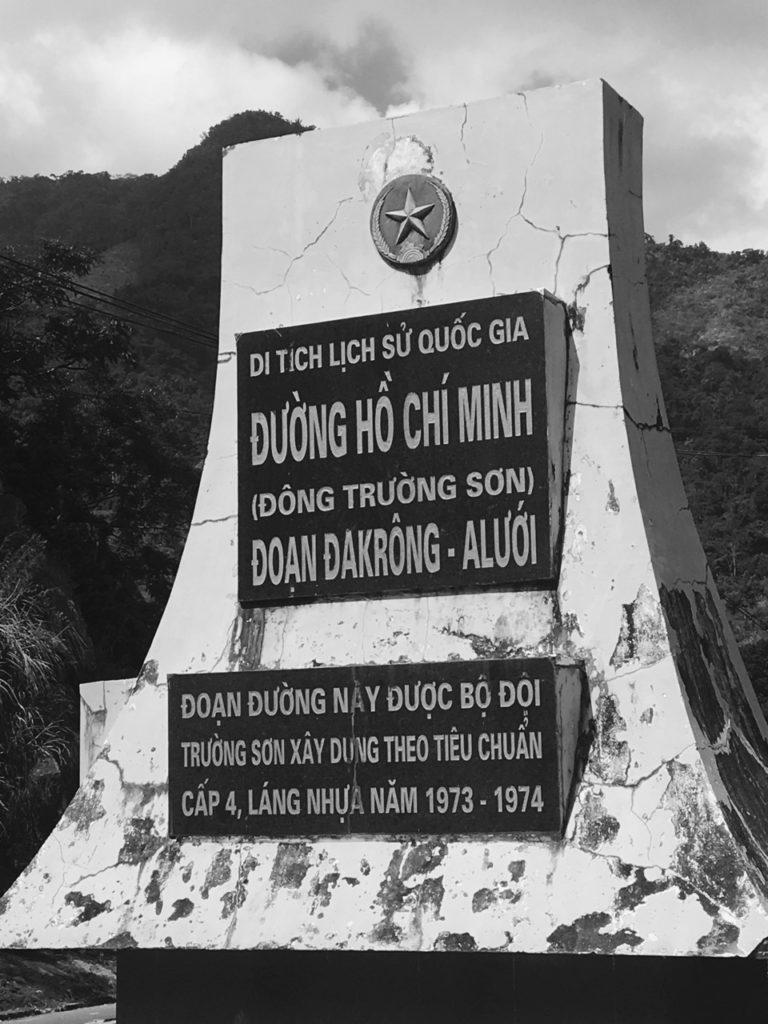
We stopped on one of the main branches to see a milestone that thanked Fidel Castro and Cuba for their support during the war and for financial aid after the war which paid to surface this part of the trail with tarmac. A telling example of the global geopolitics at play between so many international countries during the Vietnam war.
Khe Sanh Combat Base
Just 20km from the Laos border is Khe Sanh Combat base, scene of the bloodiest battle during the war. In late 1967 American Intelligence detected significant Viet Cong troop movements in the Khe San area. Fearing a major attack on the American base General Westmoreland authorised a massive increase of troops and firepower at the base. 6,000 US troops took up positions there supported by an armada of 5,000 planes and helicopters. Battle started on 21st January 1968 and in the 75 days that followed 10,000 Viet Cong and 500 US soldiers were killed. Eventually the US Army broke through along Highway 9 to relieve the Marines defending the base. Within 6 months a change of military policy saw the US withdraw from Khe San in secrecy. They buried, removed or destroyed anything that could be used in North Vietnamese propaganda.
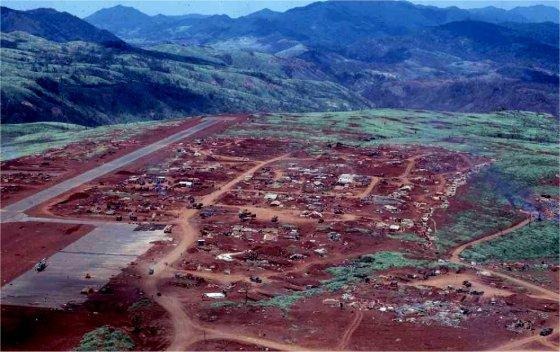
There is a small museum at the base now, which has a good collection of photographs and war paraphernalia to look around. Outside the runway can still be made out among the undergrowth. There is some military hardware, representing the few pieces of war machinery left in this area to mark its history.
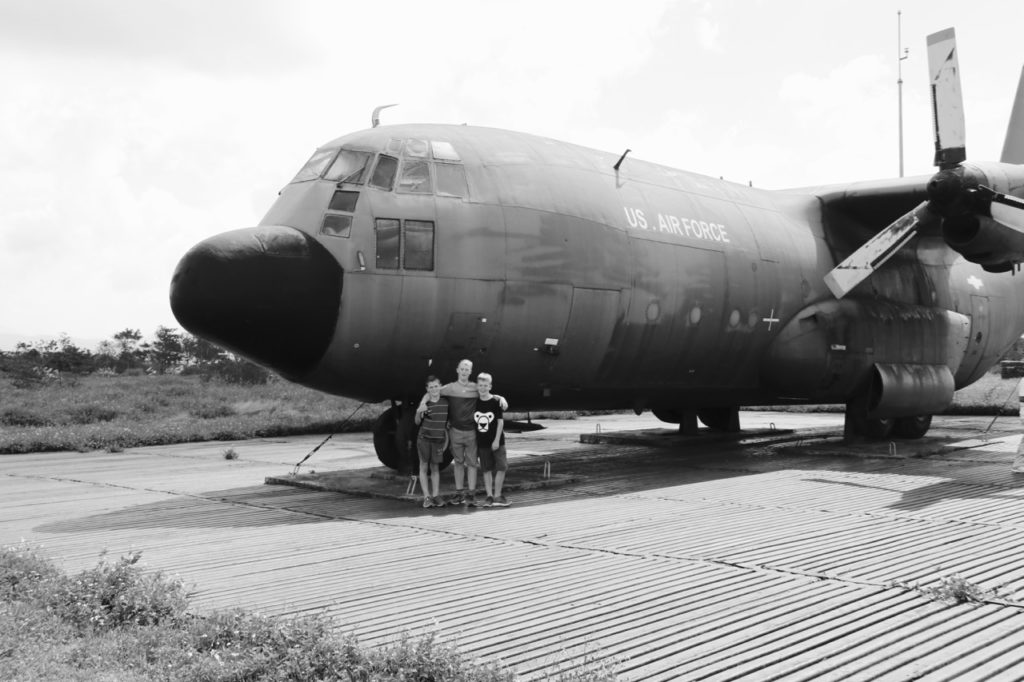
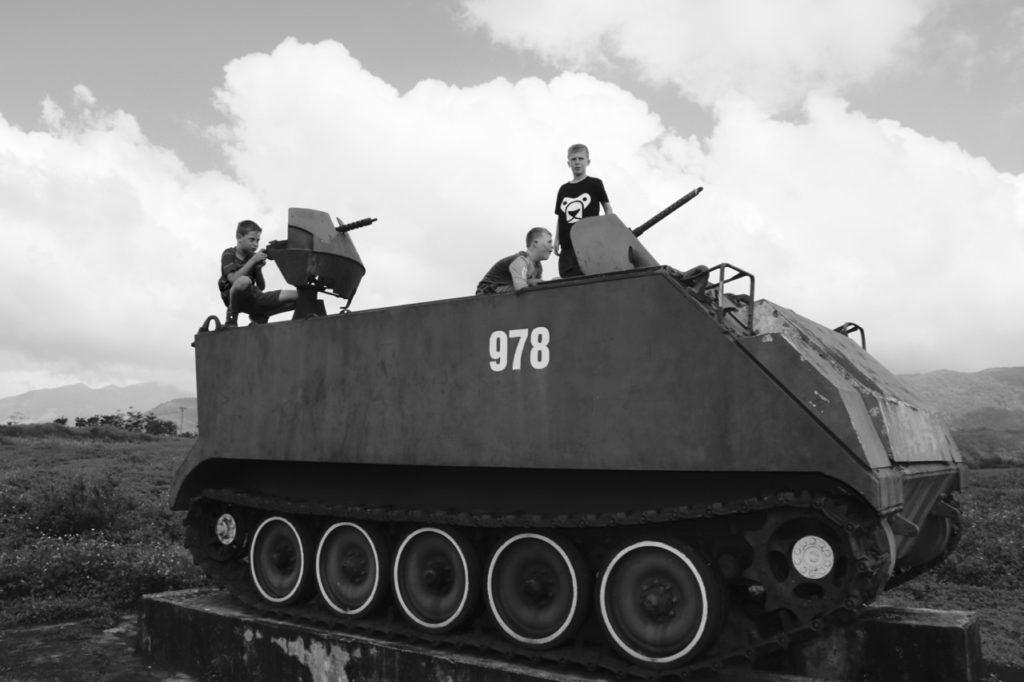
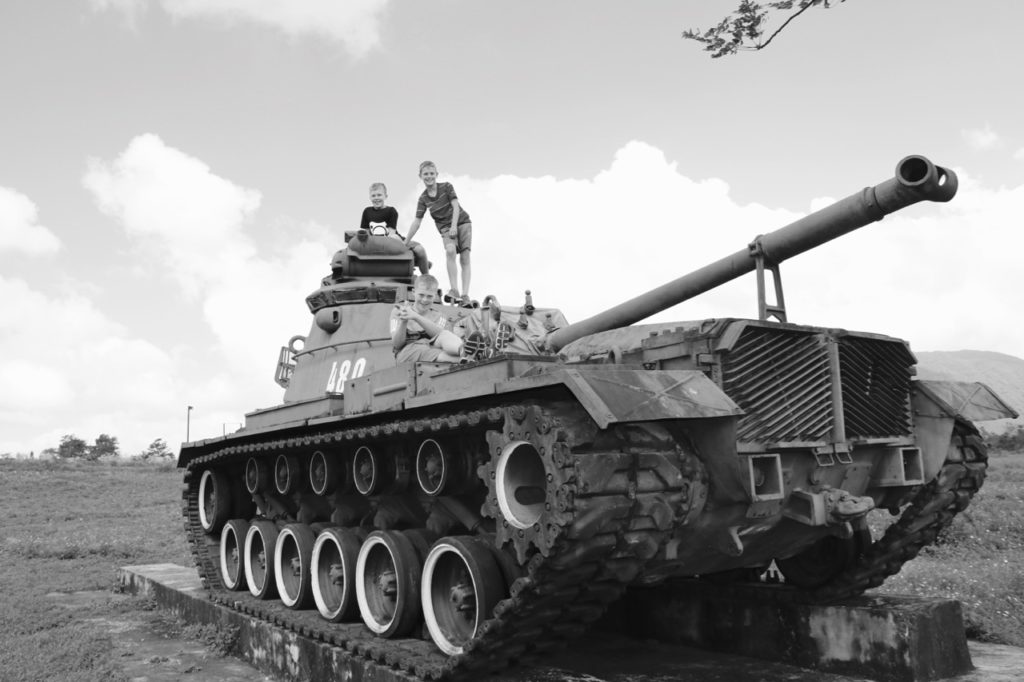
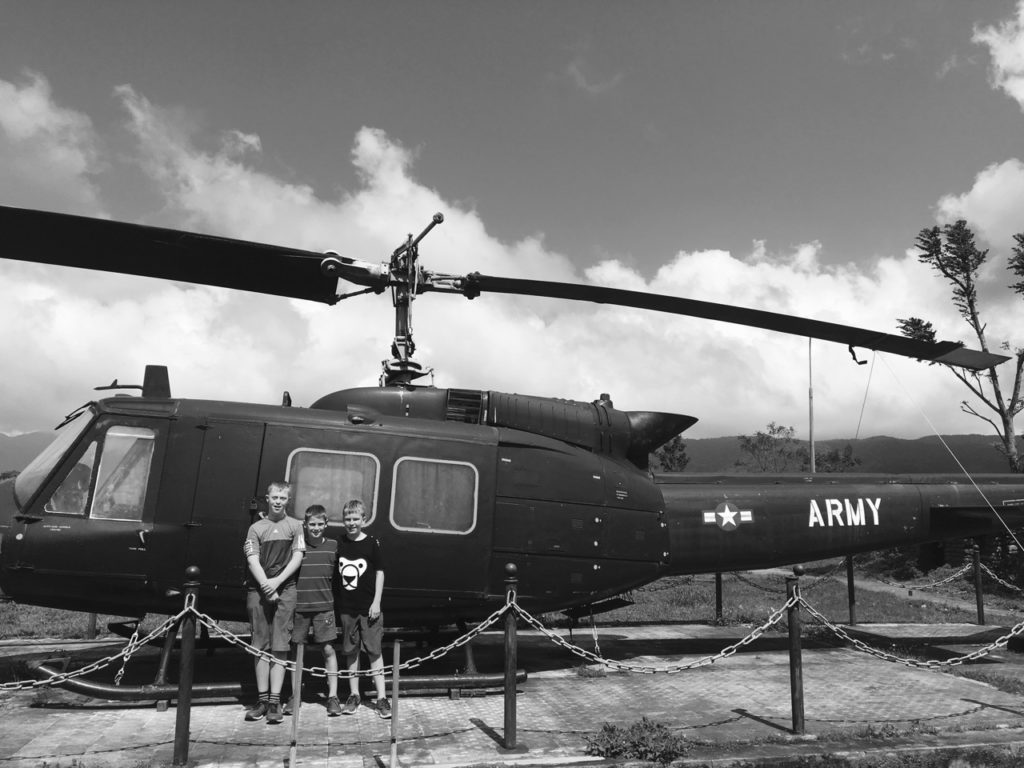
A small system of bunkers and trenches have been renovated so you can wander through. All around are thickly forested mountains from where the base was bombarded and attacked. It’s an eerily silent place now.
Vinh Moc Tunnels
Travelling back along Highway 9 to the coast we then turned north and wondered at mile after mile of white sandy beach, backed by palm trees, and paddy fields. It’s a spectacular and undeveloped seafront. Five kilometers north of the Ben Hai river is the village of Vinh Moc, which was a major transit point for troops and weapons from North to South. Boats were loaded at the beach here and would travel south along the “Ho Chi Minh Trail on the Sea” or out to Con Co island and then onward from there. In order to cut this supply route the Americans bombarded Vinh Moc from sea and air. Consequently the villagers and the Viet Cong went underground, literally.
An entire village and supply depot was built on three level between 12 meters and 23 meters below ground. The digging took place from 1966 to 1967. Over 350 people lived in the tunnels during the following six years.
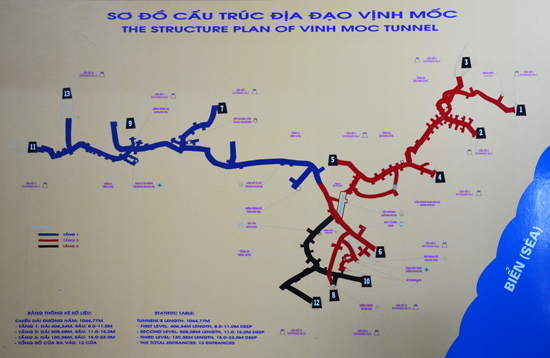
These tunnels are distinctly different to those at Cu Chi – where the main purpose was to traverse the terrain undetected in order to harass the enemy far and wide across 250km of tunnels.
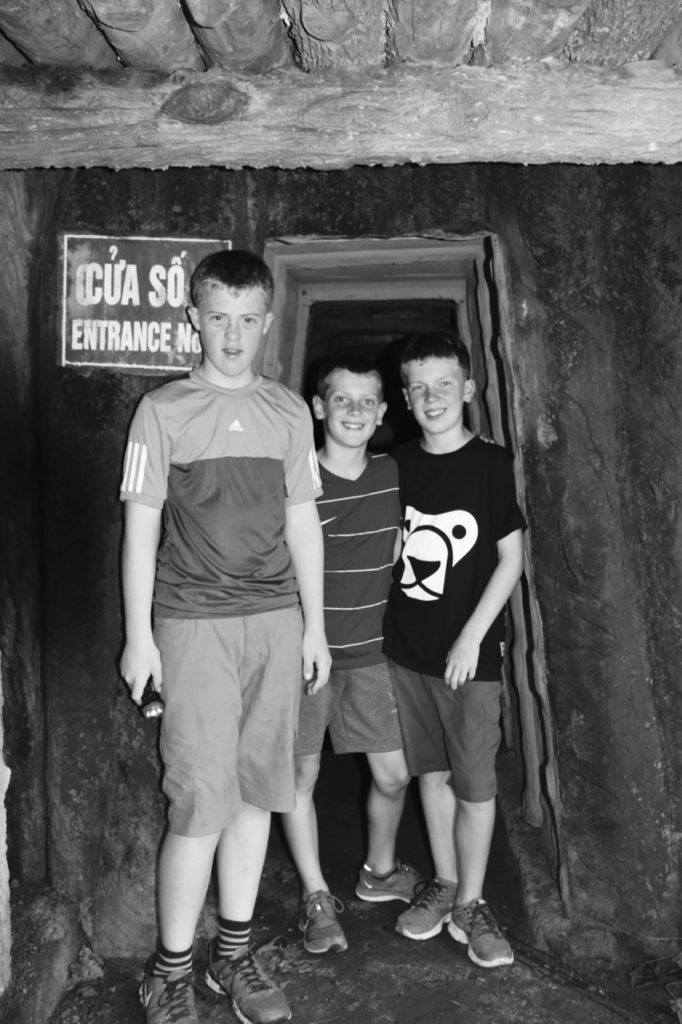
At Vinh Moc the tunnels are 2.5 km in length and 5ft high. They contain living quarters for families, kitchens, meeting rooms, a maternity ward for the 17 babies born there! Of course there is also space for weapons storage, and access to the beaches through seven exits so that the flow of equipment and people could continue via the sea route South.
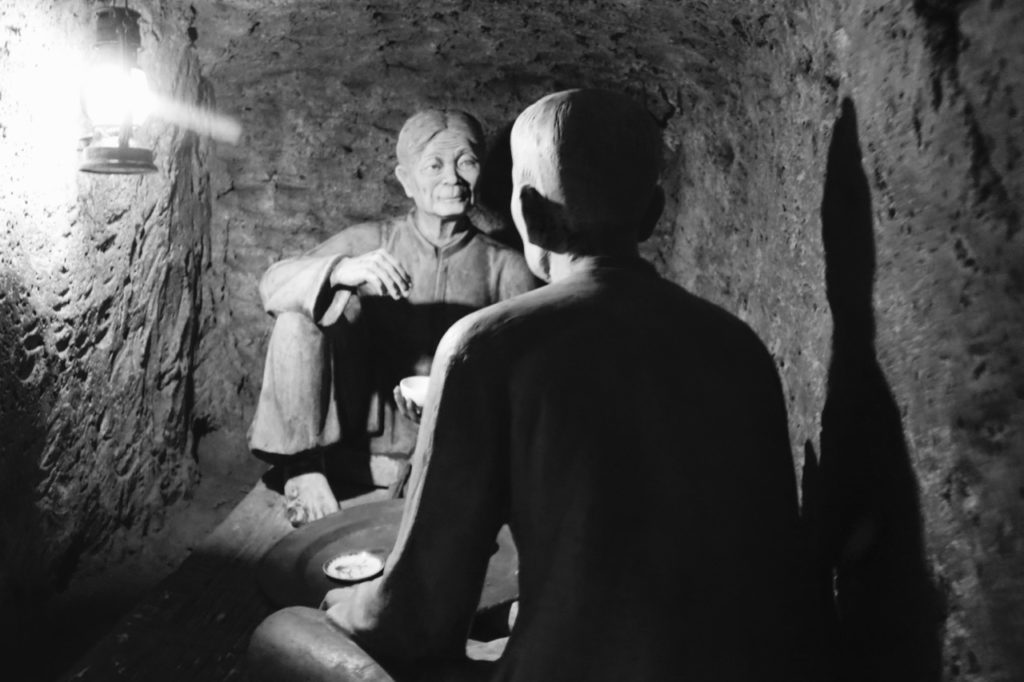
Walking around the surface of Vinh Moc the ground undulates with bomb craters, some of which are ten meters in diameter.
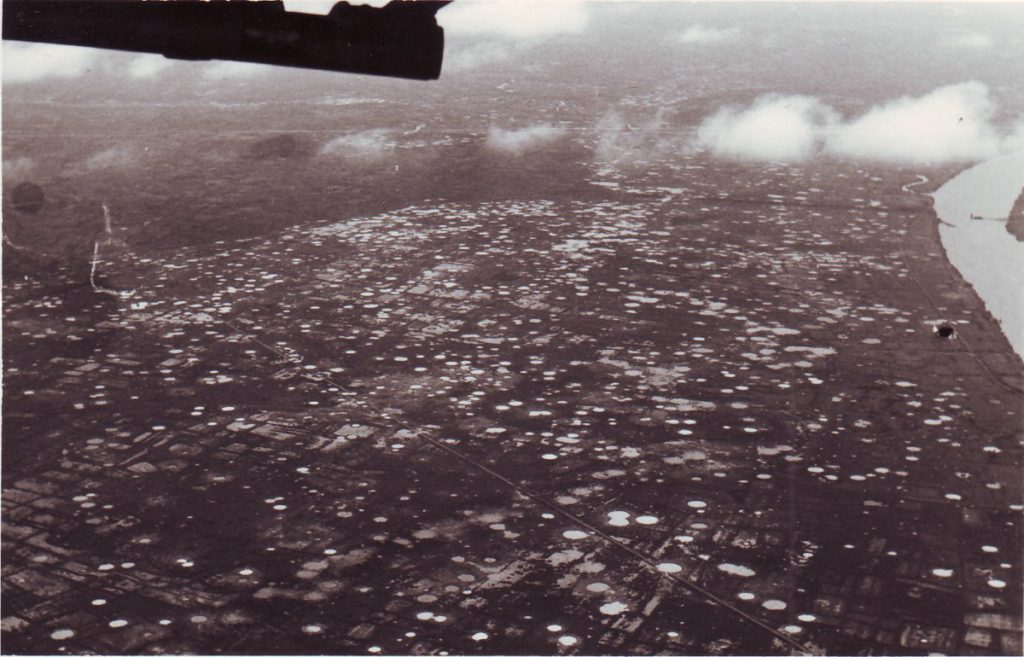
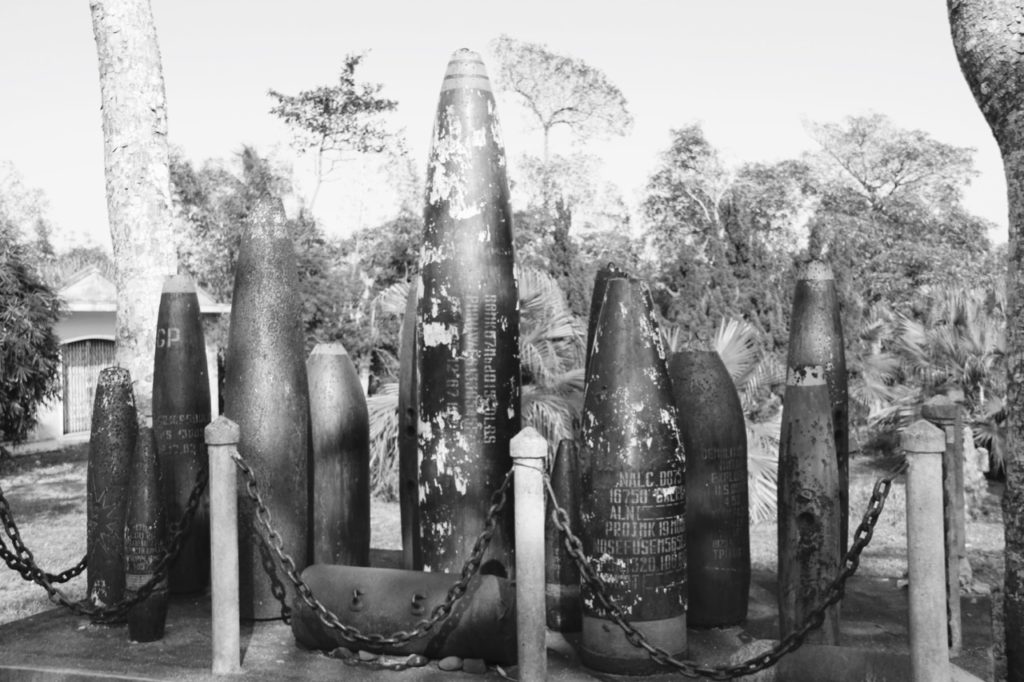
It is a remarkable place to visit. We were all fascinated by the tunnels and the experience of seeing where people lived for such a long time, while under regular bombardment, will be a stark memory for us.
The 17th Parallel and Ben Hai River
Heading inland and then south on Highway 1 we came to the infamous 17th Parallel and the Ben Hai River bridge which marked the North South border. There is small museum here on the northern river bank which has a collection of war photographs and more war paraphernalia. Outside are some enormous speakers which previously lined the river bank on both sides. They broadcast the propaganda messages North and South wanted to say to each other before weapons started doing most of the talking.
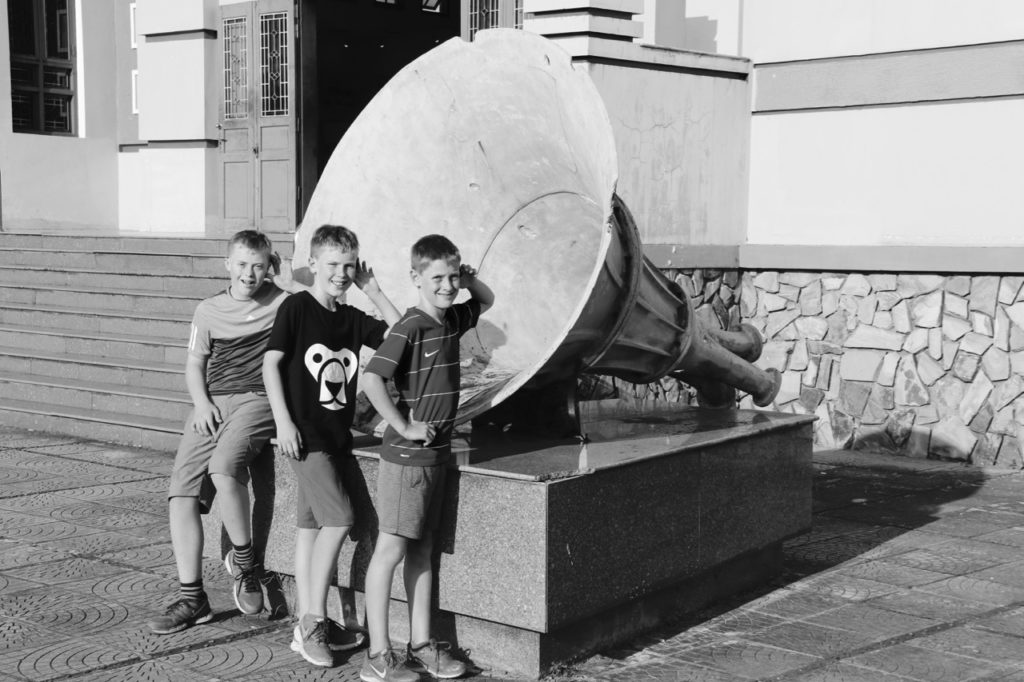
We walked across the reconstructed “old bridge” and took some time at the half way point to quietly reflect on the white line drawn there, and all those who were killed or injured in relation to that line.
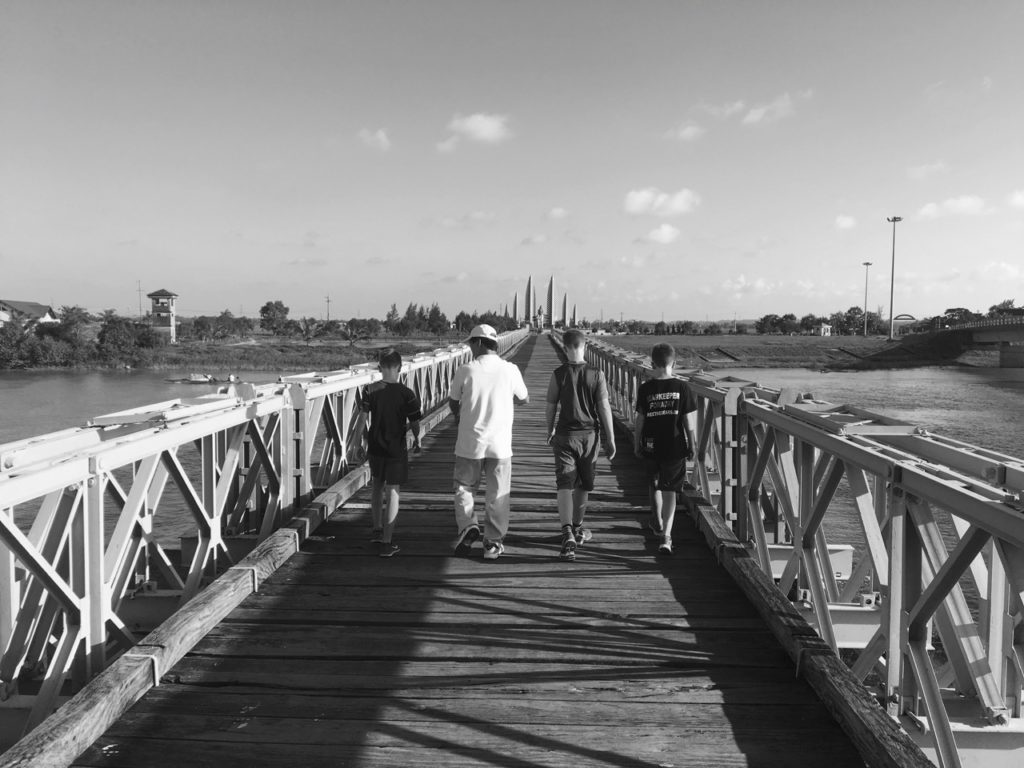
War Cemetery
One of several cemeteries is alongside Highway 1 as you travel south back to Hue. It contains only graves for North Vietnamese soldiers. Hundreds of the gravestones in the war cemeteries are unnamed – those headstones simply state “Hero”. The Viet Cong wore no dogtags, and so identification of the dead at such scale was very difficult.
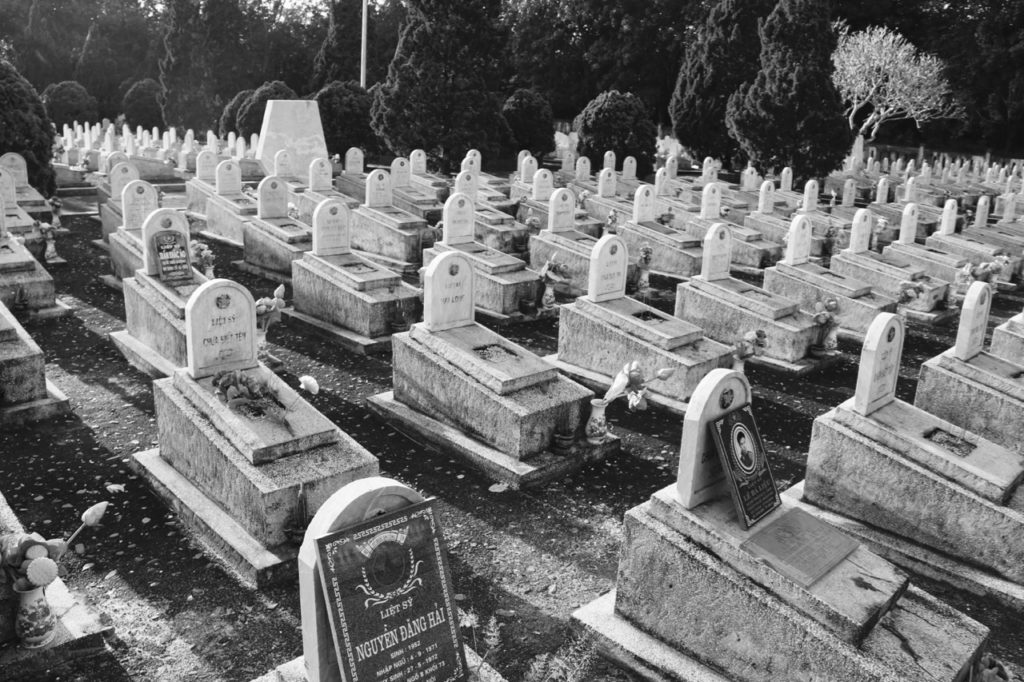
There are no war cemeteries for South Vietnamese soldiers, those that had been created were bulldozed in the years after the war ended. The drive back to Hue was subdued as we absorbed everything we had seen.
End of Day Debrief
After a long day we headed directly for the DMZ Cafe in Hue. This cafe is on a busy corner and we sat upstairs to overlook the bustling streets and pavements that typify modern day Vietnam.
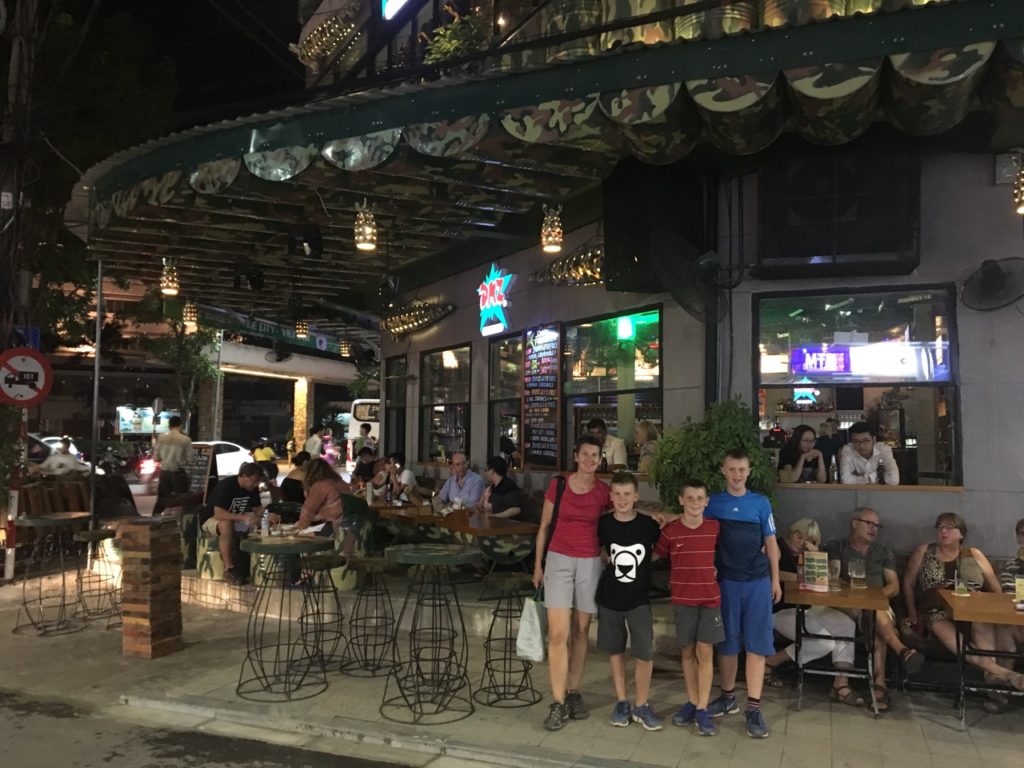
Some Statistics…
The boys have done some excellent schoolwork about the DMZ and events related to the war. Here are some of the data points they collected and used in their work.
1 million North Vietnamese soldiers were killed and 225,000 South Vietnamese.
It’s estimated 4 million Vietnamese citizens were either killed or wounded during the war. Approximately 10% of the population.
In all, over 3.1 million Americans served in the Vietnam war, 56,000 died and 2,200 are listed as missing in action.
Pentagon figures indicate that 3,689 fixed wing aircraft and 4,857 helicopters were lost. 15 million tonnes of ammunition had been expended. The cost of the war to America is estimated at $165 billion, by comparison the Korean war cost $18 billion.
46,000 Australian military personnel served in Vietnam, almost 3,000 were killed or wounded.
According to public record, Russia and China who supported North Vietnam with weapons and funding suffered no casualties.
Our Guide for the Day
Mr Trung picked us up at 8am and we started the ninety minute journey up Highway 1 to Dong Ha. Along the way Mr Trung explained he had been a 1st Lieutenant in the South Vietnamese Army during the war. He was responsible for a platoon defending the airport at Da Nang when the final push came from North Vietnam in 1975. After surrender, along with hundreds of thousands of other soldiers, he was sent to a re-eduction (prison) camp near the Laos border. After two years of hard labour he became sick and was released back to his village.
He has been guiding tourists in the DMZ since 2001 and gives a very balanced view about the war, full of facts, and passionately delivered. Consequently, he made a memorable impression on all of us but he really captivated the children because he lived through so much of what he was explaining to us.
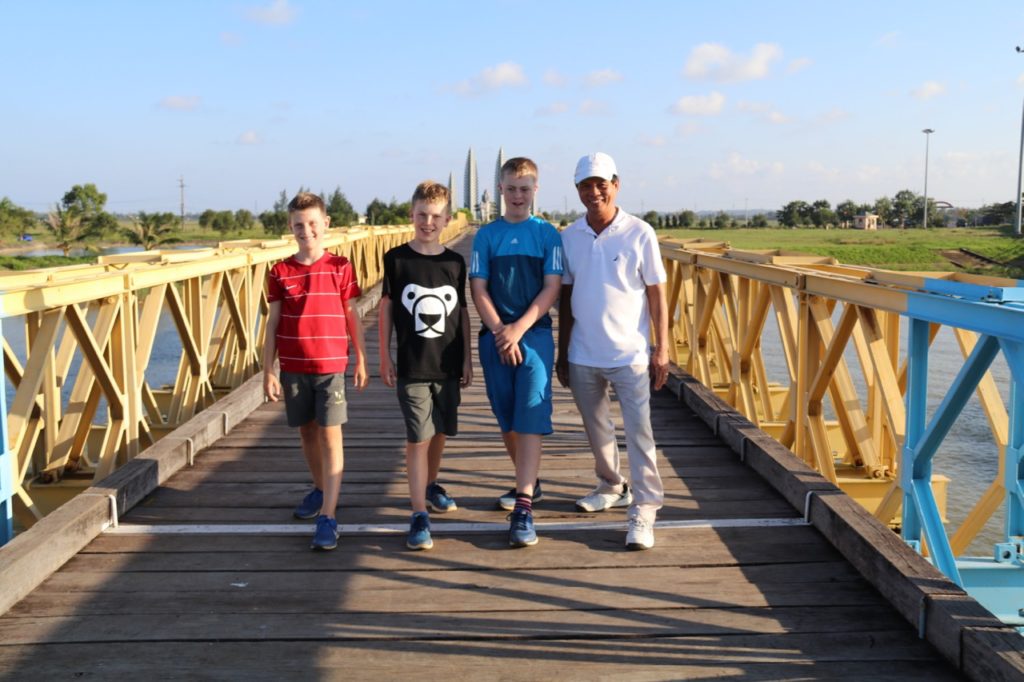
Postscript – After the War
A few lines for those interested in what happened next. After re-unification, 1 million South Vietnamese were imprisoned or forcibly “re-educated”. Vietnam invaded Cambodia in 1979 to unseat the Khmer Rouge. Consequently, this pitted them against their former sponsors, the Chinese. They stayed in Cambodia until 1989. The USSR took over the bankroll duties from China, and as a result many Vietnamese can speak Russian. However, financial support dried up as the USSR started to focus on it’s own challenges. In 1991 Vietnam opened up for International business. Today it’s a single-party socialist republic with a vibrant and rapidly expanding economy. As the boys reminded me, “the war happened before you were born dad, so it was a really long time ago”.



3 Comments.
The black and white photography really added an extra dimension to this piece. I had no idea the ‘people’ numbers were so huge, quit incredible. x
Vietnam was my dream country to visit back in 200, I didn’t make it to DMZ, only the Cu Ci tunnels, which left a lasting impression. Your children are are having a fantastic experience and they are going to be stunning boys when older. My love to you all.
Hi Nikki. We are all really fortunate to be having this experience together. Love to you all too.